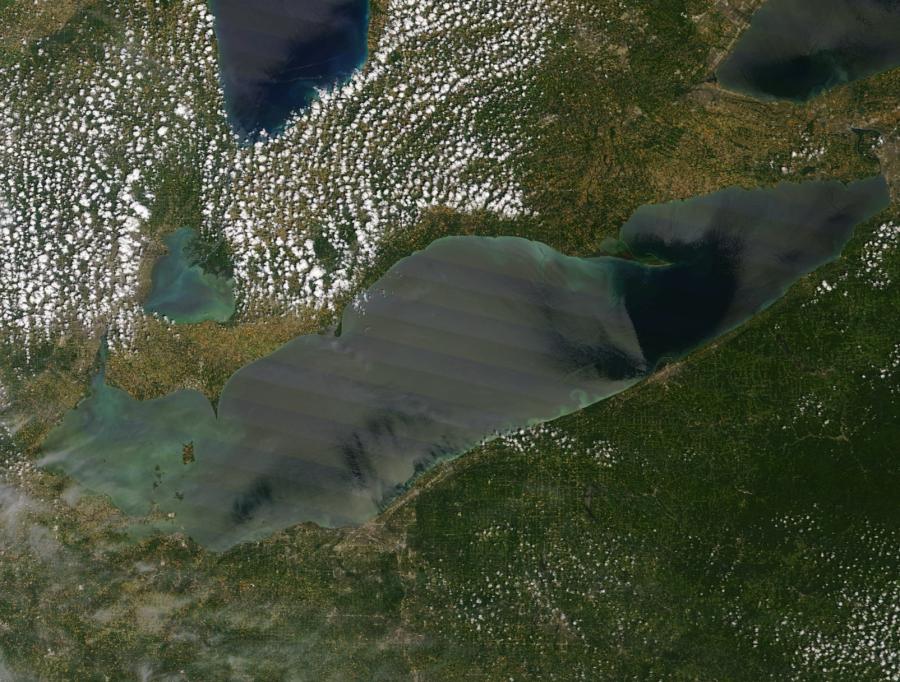DO in H2O: How Low Dissolved Oxygen Creates a “Dead Zone”

Each summer, pockets of water with low levels of dissolved oxygen (DO) develop in areas of Lake Erie’s Central Basin, which stretches from Sandusky to Erie, PA.
Water that has less than 2 parts per million of DO is called hypoxic. Hypoxia is caused by various factors, including lake stratification, the depth of the Central Basin (which averages around 60 feet), and excessive runoff of nutrients into the lake (called eutrophication).
Stratification means that water volumes with different properties form layers that act as barriers to water mixing. A thick layer of warm water is on the top, scientifically called the epilimnion. A thin layer where water temperature rapidly changes is in the middle is called the thermocline. At the bottom is a layer of cold water, called the hypolimnion.
Stratification causes DO levels in the hypolimnion to decrease because:
- Oxygen from the surface can no longer mix in with the cold bottom layer;
- Oxygen is not being created through photosynthesis because the water is too deep for enough sunlight to reach plant life; and
- The DO that is present is being used by aquatic organisms that live in the hypolimnion and by the decomposition process.
When water stratifies, it does so in pockets that grow, shrink, move, disappear, and reappear based on weather patterns that move over the lake. If stratification lasts for an extended period of time, areas of the Central Basin can become hypoxic. These areas of low DO water at the bottom of the lake are referred to as the “dead zone.”
As every good angler knows, different species of fish prefer to swim in different temperatures of water. Different species of fish also prefer to swim in water with certain DO levels. If the amount of DO drops below a fish’s preference, the fish do not die as the name “dead zone” implies. But, the need for DO wins over temperature and habitat preferences, and as a result, the fish swim away to other areas of the lake. If the area of hypoxic water lasts long enough, some smaller and less mobile organisms can die off. But because fish swim away from low DO, “dead zones” rarely result in a fish kill in a water body as big as Lake Erie.
One way Cleveland Water monitors the amount of dissolved oxygen in the water is through sensors which are located on our buoys in Lake Erie as well as in our water intake tunnels. This allows us to know when stratification is occurring and to be better prepared for it.
The data and observations collected by Cleveland Water are being used to develop a Hypoxia Early Warning System in partnership with the NOAA Great Lakes Environmental Research Lab (GLERL) and the Cooperative Institute for Great Lakes Research (CIGLR). When finalized, the model will predict the movement of hypoxic water in the Great Lakes and provide drinking water treatment plant managers with an early warning system for hypoxic waters that functions in a similar fashion to meteorological forecasts.
